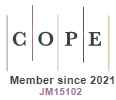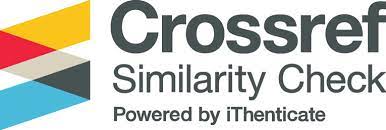Evolution and significance of banking distribution channels
DOI:
https://doi.org/10.18778/2391-6478.1.45.03Keywords:
banking, banks, distribution channels, multichannel, bank branches, cashless branches, omnichannel, bank transformationAbstract
The purpose of the article. The aim of this article is to present and evaluate the distribution channels used by retail banks, the determinants of banks' choice of these channels, and the directions of changes. The study will seek to answer the research question of what the evolution of distribution channels for banking products and services entails and what determines it.
Methodology. In analysing the banking distribution channels, the method of review and critical, descriptive and comparative analysis of the literature and reports of the banking sector was used.
Results of the research. Changes in distribution channels have been presented, from the basic model of distribution known for many years, which is the bank branch, to modern multichannel and omnichannel models. Using the example of changes in customer approach to the increasing use of the Internet and mobile applications in banking, the directions of changes in the banking sector's approach to the use of available distribution channels have been shown. The shift of customers from bank branches to the Internet and mobile applications, where customers have already learned to perform simple banking operations, has forced changes in the banking sector. Directions in the banking sector's move away from traditional brick-and-mortar branches towards combining them with other channels such as call centers, the Internet, or mobile applications to reduce costs and increase business efficiency have been indicated. Banks, by reducing costs and adapting to the observed trend of customers moving to remote channels, are beginning to reorganize their distribution network, including the bank branches themselves.
Downloads
References
Ambroziak, T., & Lewczuk, K. (2009). Miara poziomu dopasowania kanału dystrybucji do strumienia materiałów. Prace Naukowe Politechniki Warszawskiej.
Google Scholar
Bankier.pl. (2025). Rynek telekomunikacyjny rośnie. Bankier.pl. https://www.bankier.pl/wiadomosc/Rynek-telekomunikacyjny-rosnie-W-2024-roku-osiagnal-wartosc-56-mld-zl-8870792.html
Google Scholar
BaseLinker. (2022). Kanały dystrybucji – jakie są rodzaje kanałów sprzedaży i rozwiązania logistyczne? Jak dokonać wyboru? BaseLinker Blog. https://www.baselinker.com/blog/kanaly-dystrybucji-rodzaje-i-rozwiazania-kanalow-sprzedazy
Google Scholar
Boczoń, W. (2020). Raport: Liczba placówek bankowych – IV kwartał 2019 r. Puls Biznesu. https://www.pb.pl/raport-prnews-pl-liczba-placowek-bankowych-iv-kw-2019-1162287
Google Scholar
Boczoń, W. (2022a). Raport: Liczba bankowych placówek bezgotówkowych – I kwartał 2022 r. Puls Biznesu. https://www.pb.pl/raport-prnews-pl-liczba-bankowych-placowek-bezgotowkowych-i-kw-2022-1162116
Google Scholar
Boczoń, W. (2022b). Raport: Liczba placówek bankowych – I kwartał 2022 r. Puls Biznesu. https://www.pb.pl/raport-prnews-pl-liczba-placowek-bankowych-i-kw-2022-1162117
Google Scholar
Boczoń, W. (2023a). Banki likwidują placówki. Niedługo konto założymy jedynie przez internet. Bankier.pl. https://www.bankier.pl/smart/banki-likwiduja-placowki-niedlugo-konto-zalozymy-jedynie-przez-internet
Google Scholar
Boczoń, W. (2023b). Raport: Liczba bankowych placówek bezgotówkowych – I kwartał 2023 r. Puls Biznesu. https://www.pb.pl/raport-liczba-bankowych-placowek-bezgotowkowych-i-kw-2023-1190122
Google Scholar
Boczoń, W. (2023c). Raport: Liczba placówek bankowych – I kwartał 2023 r. Puls Biznesu. https://www.pb.pl/raport-liczba-placowek-bankowych-i-kw-2023-1190308
Google Scholar
Boczoń, W. (2024a). Banki znów zatrudniają. Ale nie do placówek. Bankier.pl. https://www.bankier.pl/wiadomosc/Banki-znow-zatrudniaja-Ale-nie-do-placowek-8764465.html
Google Scholar
Boczoń, W. (2024b). Raport: Liczba bankowych placówek bezgotówkowych – I kwartał 2024 r. Puls Biznesu.. https://www.pb.pl/raport-liczba-bankowych-placowek-bezgotowkowych-i-kwartal-2024-r-1219792
Google Scholar
Boczoń, W. (2024c). Raport: Liczba placówek bankowych – I kwartał 2024 r. Puls Biznesu.. https://www.pb.pl/raport-liczba-placowek-bankowych-i-kwartal-2024-r-1218661
Google Scholar
CEM [Customer Experience Manager]. (2023). 5 kluczowych trendów kształtujących Customer Experience. CXManager.pl. https://www.cxmanager.pl/5-kluczowych-trendow-ksztaltujacych-customer-experience
Google Scholar
Chwirot-Zakrzewska, P. (2004). BRE Bank SA – Ocena wielokanałowego modelu dystrybucji usług bankowych w Polsce. E-Finanse: Finansowy Kwartalnik Internetowy, 4(2004).
Google Scholar
Eichermuller, T. (n.d.). Omnichannel banking: A prerequisite for a seamless customer journey. Knowis. https://www.knowis.com/blog/omnichannel-banking-a-prerequisite-for-a-seamless-customer-journey
Google Scholar
Goska, S. (2014). Nowoczesne kanały dystrybucji produktów bankowych – porównanie ofert wybranych banków. Finanse i Prawo Finansowe, 2(2014), 23-37.
Google Scholar
DOI: https://doi.org/10.18778/2391-6478.1.2.03
Grzywacz, J. (2006). Marketing w działalności banku. Difin.
Google Scholar
Iwanowicz-Drozdowska, M., Jaworski, W. L., Szelągowska, A., & Zawadzka, Z. (2017). Bankowość – instytucje, operacje, zarządzanie. Warszawa.
Google Scholar
Kisiel, M. (2024). Placówki bankowe stają się tematem politycznym. Kiedy w Polsce? Bankier.pl. https://www.bankier.pl/wiadomosc/Placowki-bankowe-staja-sie-tematem-politycznym-Kiedy-w-Polsce-8773217.html
Google Scholar
KNF [Komisja Nadzoru Finansowego]. (n.d.). Raport KNF, Dane miesięczne sektora bankowego – listopad 2024 r. https://www.knf.gov.pl/?articleId=56224&p_id=18
Google Scholar
Kuczamer-Kłopotowska, S. (2005). Polityka dystrybucji. W: W. Żurawik (red.), Marketing. Podstawy i kontrowersje. Wydawnictwo Uniwersytetu Gdańskiego.
Google Scholar
Pietrzak, J. (2002). Wpływ modelu dystrybucji na konkurencyjność banku. Kredyt i Bank, 3(2002).
Google Scholar
PZU. (n.d.). Raport CX2024. Pobrane z https://www.pzu.pl/raportcx
Google Scholar
Raporty NetB@nk. (n.d.). Raporty za IV kwartał lata od 2009 do 2023. Pobrane z https://zbp.pl/raporty-i-publikacje/raporty-cykliczne/raport-netbank
Google Scholar
Rybacka, J. (2023). Wpływ pandemii COVID-19 na sposób korzystania z usług bankowych oraz na postrzeganie banków w Polsce – na podstawie badania empirycznego. Finanse i Prawo Finansowe, 2(38).
Google Scholar
DOI: https://doi.org/10.18778/2391-6478.2.38.05
Supernak, B. (2023). Liczba placówek bankowych spadła do 9,8 tys., najmniej od 25 lat. Inwestycje.pl. Pobrane z https://inwestycje.pl/biznes/liczba-placowek-bankowych-spadla-do-98-tys-najmniej-od-25-lat/
Google Scholar
Szczepaniec, M. (2004). Marketing relacyjny jako element strategii banków komercyjnych. Wydawnictwo Uniwersytetu Gdańskiego.
Google Scholar
Trojanowski, T. (2011). Pośrednicy oraz rodzaje kanałów dystrybucji. Logistyka, 6.
Google Scholar
UKE [Urząd Komunikacji Elektronicznej]. (2024). Raport o stanie rynku telekomunikacyjnego w 2023 roku. Pobrane z https://uke.gov.pl/akt/raport-o-stanie-rynku-telekomunikacyjnego-w-2023-roku,545.html
Google Scholar
Węcławski, J. (2009). Franchising w strategiach banków komercyjnych. Zeszyty Naukowe Uniwersytetu Szczecińskiego, Ekonomiczne Problemy Usług, 38.
Google Scholar
Witczak, Z. (2024). Rozwój placówek bezgotówkowych w Polsce. Finanse i Prawo Finansowe, 2(42), 41–56.
Google Scholar
DOI: https://doi.org/10.18778/2391-6478.2.42.02
Downloads
Published
How to Cite
Issue
Section
License

This work is licensed under a Creative Commons Attribution-NonCommercial-NoDerivatives 4.0 International License.














